Location:
PMKI > Project
Controls 3.0 > Work Performance
Management.
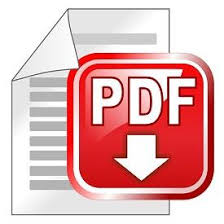

Project Controls 3.0 (PC-3.0) is designed to build onto
the existing developments in project management and
project controls to:
- Overcome problems in current project management
and controls practices,
- Implement a simple, robust system that is effective
for all types of project delivery, and
- Refocus the controls effort on helping management
craft success.
- Work Performance Management
(WPM) - Overview
- How WPM Works
- Applying WPM to WUs Using Agile
- Applying WPM to Lean and
Distributed WUs
- Using WPM to augment CPM predictions
- Applying WPM to WUs Without a
Simple Measure
- Useful Papers & Resources.
Other related sections of the PMKI:
- Project Controls 3.0
- Work Units
(WUs)
- PC-3.0 Assessing Delay
& Disruption
- Traditional Project Controls
- Work Performance
Management home page
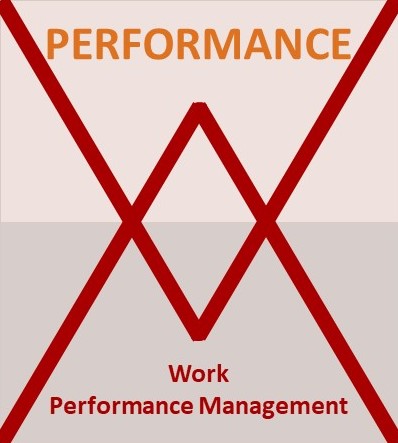 WPM
is central to Project
Controls 3.0 (PC-3.0), it offers a simple,
robust solution to the challenge of consistently
predicting the completion of each Work
Unit (WU) regardless of the methodology being
employed to create the WU's outputs.
WPM
is central to Project
Controls 3.0 (PC-3.0), it offers a simple,
robust solution to the challenge of consistently
predicting the completion of each Work
Unit (WU) regardless of the methodology being
employed to create the WU's outputs.
WPM has two primary functions, calculating the schedule variance at the update date, and based on this data, predicting the likely schedule completion date and variance at completion (VAC), of the WU. WPM assumes the average production achieved to date continues through to the end of the project. The challenge for WU management is to change the rate of production if this prediction is unacceptable.
The basis of the calculations used in WPM are similar to
Earned Schedule and Earned Duration, but applied using a
simple spreadsheet. The only requirements needed to
implement WPM are:
• A consistent metric to measure the work planned and
accomplished, and
• A simple but robust assessment of when the work was
planned to be done.
Art: Overview of WPM. Explains in more detail the theoretical basis of the Work Performance Management approach, and the simple framework needed to set up and use WPM on a project.
Because of its simple, robust, and defensible design, WPM
can be used on any type of WU including:
- Any WU using an Agile or
adaptive development methodology
- Other WUs with measurable
outputs that are not using, or are not suited to, CPM,
- To enhance the predictive
capabilities of WUs using a CPM schedule, and
- WUs with no simple way to
measure progress.
The development of WPM means there is no longer any excuse for a project team, senior management and/or the organization's governing body ‘not to know’ how the work of each WU is progressing.
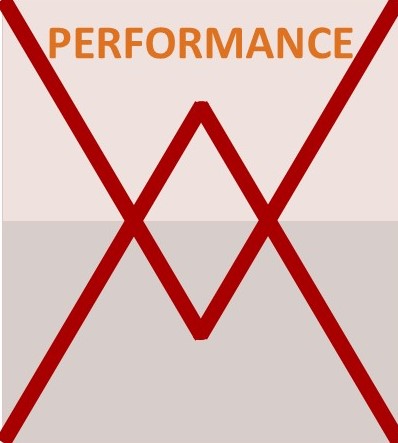 WPM
works by setting an expected rate of working using an
appropriate metric, then measuring the actual work
achieved to date. Based on this data, WPM can assess how
far ahead or behind plan the work currently is, and uses
this information to calculate the likely project
completion date and VAC assuming work will continue at the
current rate.
WPM
works by setting an expected rate of working using an
appropriate metric, then measuring the actual work
achieved to date. Based on this data, WPM can assess how
far ahead or behind plan the work currently is, and uses
this information to calculate the likely project
completion date and VAC assuming work will continue at the
current rate.
WPM works by comparing the amount of work achieved to
date with the amount that was planned to be achieved. The
basis of calculations used in WPM are the same as is used
in Earned Schedule (ES) , and therefore, a similar level
of usefulness and accuracy can be expected. However,
compared to ES, WPM is much simpler to set up and use. The
only two requirements to implement WPM are:
• A consistent metric to measure the work planned
and accomplished, and
• A simple but robust assessment of when the work
was planned to be done.
Art: How WPM Works. Explains in more detail the processes and calculations used in WPM and that by plotting the trends for both the current variance (WV) and VAC management know how the project is tracking overall. This information is invaluable in Agile and other projects where CPM schedules are not used, ans even where a project has a good CPM schedule in place this additional information is useful.
For more details on how the WPM spreadsheet works: Download the Easy WPM Workbook instructions for its use.
The key to successfully implementing WPM is aligning the measure of work with factors used in the day-to-day performance of the work. The units can be:
The factors used in the WPM calculation are:
The calculated completion date is based on the presumption that nothing changes and tends to be pessimistic – this is the challenge for the IPT to overcome.
The measure of work used should be focused on work complete so as to encourage the minimization of work in progress, WIP.
Blg: A focus on Work-Flow Little’s Law suggests that any increase in WIP automatically increases lead times! To borrow from Lean: WIP is a waste and needs to be minimized. This post explains the concept of queuing theory used in PC-3.0.
The Easy WPM Workbook, is a practical spreadsheet that performs the calculations needed to implement Work Performance Management (WPM). It calculates both the current status, and the projected completion date, by comparing the work accomplished to the work planned:
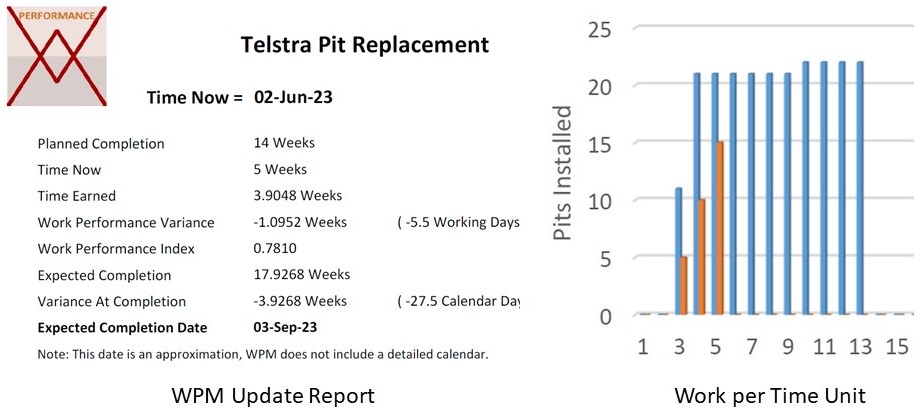
To see how WPM works in practice, download the free WPM
sample files. This Zip folder contains three example
projects of similar size to a typical WU with a brief
description of each and instructions on how to use the
spreadsheets. The samples are:
1. A small asset replacement project (Telstra Pit
Replacement)
2. A 20-week software development project using two scrum
teams
3. Construction of a new $15 million railway bridge
Free download of the Easy WPM Sample Folder.
For more details on these sample projects see the: Easy WPM Sample Outline.
Note: The project set-up fields are locked in these
samples.
For more details on how the Easy WPM Workbook is set up: Download the instructions for its use.
Visit our shop page to buy the Easy WPM Workbook
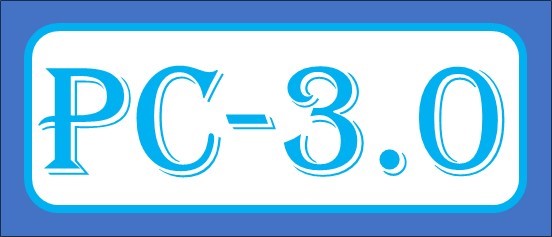 The
Soft Project spectrum
The
Soft Project spectrum
Soft projects (soft WUs) are those where the final result is not defined by the creation of a tangible asset. There may be some tangible deliverables produced, but the value generated by the WUis in the new capability, concept, or situation that is created. The concept of soft projects extends well beyond software development to encompass WUs focused on change management, business process improvement, service delivery, and design development. For example, a new architectural design may be printed onto paper but the value is the design concept (which enables a new structure to be built), not the physical plans.
Any WU that is set up to deliver an intangible benefit, and involves a degree of creativity and/or stakeholder engagement as part of the development process can be considered soft. But soft does not mean easy to do, or manage! The key characteristic of a soft project is that the final solution can take many forms – different project teams will create acceptable outcomes using quite different techniques and solutions. Because of their nature, soft projects benefit from using a flexible approach to manage work that adapts to the emerging knowledge and needs of the project team and their stakeholders. This flexibility may include agile, iterative, and/or incremental approaches to the creation of the desired deliverable or outcome.
The Agile solution
These days, Agile is the management approach of choice for most soft projects and this should reflect in the way most soft WUs are managed. There are many different forms of agile involving different tools and techniques such as Scrum, SAFe®, DA, and Kanban. However, across all of these different methodologies, the essence of agile remains – intelligent flexibility; the people doing the work are in the best position to choose what to do next and scope changes are welcome as long as implementing the change increases the overall value of the deliverables to the project stakeholders.
The core elements of an agile approach are the project team and stakeholders develop a backlog of work to be done to achieve the desired objective, and then at regular intervals the project team select which of the items in the backlog should be done next. The underlying assumption is a committed and skilled team actively involved in the work are the best people to decide what should be done, and the best way to do it. Click through to see more on Agile approaches to development. WPM works within this paradigm to assess progress and predict completion.
Most of the tools and techniques used to manage Agile projects are good at defining the work (done, in-progress, or not started) and can indicate if the work is ahead or behind a nominated planned rate of production, but there is no direct calculation of the time the work is currently ahead or behind, or what this is likely to mean for the completion of the project. Work Performance Management (WPM) has been designed to solve this challenge. It is a simple, practical tool that uses project metrics that are already being used for other purposes to assess progress and calculate a predicted completion date in a consistent, repeatable, and defensible way by comparing the amount of work achieved at a point in time with the amount of work planned to have been achieved. Based on this data WPM calculates the project status and the expected completion date assuming the rate of progress remains constant.
Art: WPM for Agile Projects. This article identifies the cause of the gap in Agile project management, the inability of current tools to accurately predict completion and demonstrates how WPM will effectively close this gap. Most project sponsors and clients need to know when the project they are funding will finish, other people are dependent on the project's outputs to achieve their objectives. WPM provides this answer based on consistent, repeatable, and defensible calculations. A functioning version of the project discussed in this article is included in the free WPM sample folder:
Free download of the Easy WPM Sample Folder.
For more details on these sample projects see the: Easy WPM Sample Outline.
Note: The project set-up fields are locked in these
samples.
For more details on how the Easy WPM Workbook is set up: Download the instructions for its use.
Visit our shop page to buy the Easy WPM WorkbookLean Construction is a relationship-oriented, production management-based approach to construction project delivery. Scheduling using the Last Planner System and a 'pull planing' approach tends to be phase based and adaptive. This makes the approach entirely compatible with PC-3.0. See more on Lean Construction.
Distributed WUs are defined as traditional construction or engineering works that have a significant degree of flexibility in the way the work can be performed. Usually, there is some degree of overarching constraint – there is a required overall sequence of working, but there is also a significant degree of flexibility in the way the detailed work can be performed. While there may be sensible or desirable sequences of work at the detail level, these can be changed relatively easily. Lean approaches to planning and managing the work suite this type of project, but are not essential.
This type of project and/or WU is surprisingly common and
exist on a spectrum ranging from those where there really
are no practical constraints on the sequence of working
(but you still need to set up the WU and close out the WU
on completion), through to those where there are
significant overall constraints, but there is still
flexibility in how the short-term detailed work is
sequenced.
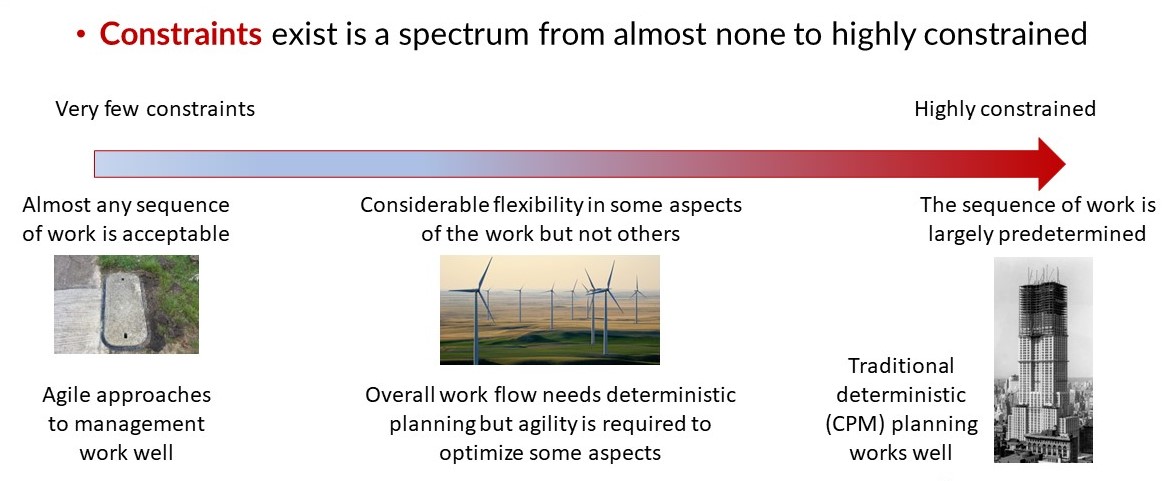
WPM works within this paradigm to assess progress and predict completion based on comparing the quantity work achieved to the quantity of work planned to be achieved up to a point in time.
Art: WPM for Lean & Distributed Projects. This article identifies the limitations of a CPM schedule for predicting completion when the sequence of working can be changed with relative ease. WPM provides the answer to predicting project status and completion based on consistent, repeatable, and defensible calculations. A functioning version of the project discussed in this article is included in the free WPM sample folder:
Blg:
Learning from Lean Construction The concepts
embedded in Lean Construction, supported by PC-3.0 are
applicable to a very wide range of project types in
addition to its roots in construction:
- Sustainability: focus on the whole of life, not
just the immediate short term.
- Efficiency: work collaboratively to avoid
unnecessary waste.
- Work effectively: keep everyone engaged and
working efficiently.
- Adaptability: work to keep improving the overall
outcomes.
- Maintain overall control: use control systems that
facilitate adaptability in the current work, while
maintaining a clear overall picture of where the project
is heading (PC-3.0).
Free download of the Easy WPM Sample Folder.
For more details on these sample projects see the: Easy WPM Sample Outline.
Note: The project set-up fields are locked in these
samples.
For more details on how the Easy WPM Workbook is set up: Download the instructions for its use.
Visit our shop page to buy the Easy WPM WorkbookWe all know (or should know) that when a project or WU is running late, the predicted completion date calculated by the ‘critical path method’ (CPM) at an update tends to be optimistic, and this bias remains true for predictions based on simple time analysis as well as schedule calculations made using resource leveling.
There are two primary reasons for this:
1. The assumption in CPM is that all future work will
occur exactly as planned regardless of performance to
date. The planned durations of future activities do not
change.
2. The burning of float has no effect of the calculated
completion date until after the float is 100% consumed and
the activity become critical.
For more on this issue see Why Critical Path Scheduling is Wildly Optimistic!
However, when assessing progress, both CPM and WPM are useful. A well implemented CPM schedule focuses on answering the question are you doing 'the right work?' WPM focuses on answering the question are you doing enough work? From a PC-3.0 management perspective, use the most pessimistic answer as a basis for corrective actions.
Having an optimistic schedule for the motivation of resources to perform in not all bad – the updated CPM schedule shows the minimum level of performance needed to stop the situation deteriorating. The problem is more senior managers also need a reliable prediction of when the project can realistically be expected to finish and CPM cannot provide this. A more realistic / pessimistic view is obtained by apply the principles of Work Performance Management (WPM) to a CPM schedule, using ‘activity days’ taken from the CPM schedule as the metric.
Art: WPM Solves CPM Optimism. Uses a small, simple CPM schedule to demonstrate the differences in projected completion dates between CPM and WPM. The value of WPM is stripping away the optimism bias inherent in CPM scheduling (particularly early in the project) providing management with a clear indication of where the project is likely to finish if work continues at the current levels of productivity. These predictions are not a statement of fact, change the productivity and you change the outcome! A similar approach can be used to assess projected completion dates based on a simple manual bar chart.
 Some
WUs will not have a simple measure of work, for example:
conducting complex designs or engaging in a PR management
exercise. Very little in the way of measurable work is
produced before the end. The approach to managing this
type of WU (or project) is:
Some
WUs will not have a simple measure of work, for example:
conducting complex designs or engaging in a PR management
exercise. Very little in the way of measurable work is
produced before the end. The approach to managing this
type of WU (or project) is:
Provided there is a clear definition of 'complete' for each milestone and the overall WU, this is a remarkably robust system. Underestimating the time needed to complete will quickly show up as virtually no progress in future reporting periods and/or become a ridiculous under estimate.
Blg:
Using WPM to Control Unmeasurable Work! Some
projects and WUs involve work where it is nearly
impossible to measure progress based on outputs produced,
until the work is complete and signed off. This post
looks at applying WPM to this type of complex undertaking.
Download
the WPM Sample Spreadsheet.
Art: Overview of WPM. Explains in more detail the theoretical basis of the Work Performance Management approach, and the simple framework needed to set up and use WPM on a project.
Art: How WPM Works. Explains in more detail the processes and calculations used in WPM and that by plotting the trends for both the current variance (WV) and VAC management know how the project is tracking overall. This information is invaluable in Agile and other projects where CPM schedules are not used, ans even where a project has a good CPM schedule in place this additional information is useful.
Blg: Using WPM to Control Unmeasurable Work! Some projects and WUs involve work where it is nearly impossible to measure progress based on outputs produced, until the work is complete and signed off. This post looks at applying WPM to this type of complex undertaking.
Art: WPM for Agile Projects. This article identifies the cause of the gap in Agile project management, the inability of current tools to accurately predict completion and demonstrates how WPM will effectively close this gap. Most project sponsors and clients need to know when the project they are funding will finish, other people are dependent on the project's outputs to achieve their objectives. WPM provides this answer based on consistent, repeatable, and defensible calculations.
Art: WPM for Lean & Distributed Projects. This article identifies the limitations of a CPM schedule for predicting completion when the sequence of working can be changed with relative ease. WPM provides the answer to predicting project status and completion based on consistent, repeatable, and defensible calculations.
Art: WPM Solves CPM Optimism. Uses a small, simple CPM schedule to demonstrate the differences in projected completion dates between CPM and WPM. The value of WPM is stripping away the optimism bias inherent in CPM scheduling (particularly early in the project) providing management with a clear indication of where the project is likely to finish if work continues at the current levels of productivity. These predictions are not a statement of fact, change the productivity and you change the outcome! A similar approach can be used to assess projected completion dates based on a simple manual bar chart.
Blg: A focus on Work-Flow Little’s Law suggests that any increase in WIP automatically increases lead times! To borrow from Lean: WIP is a waste and needs to be minimized. This post explains the concept of queuing theory used in PC-3.0.
Blg: Multi-Tasking and the Bow Wave Effect From a scheduling perspective, the inevitable consequence of too much WIP is to require people to multi-task. If you do not have enough people to do all of the work, each person is will either be working on multiple tasks simultaneously or will abandon a partially complete task to start then next in response to management pressures. This is always a problem, but the focus on work completed in PC-3.0, will help management see through the problem.